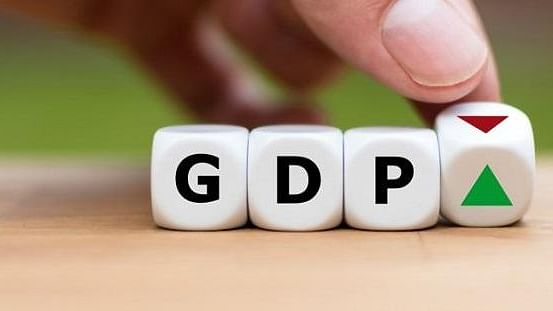New Delhi: Government’s stringent and aggressive move of a full three-week lockdown, across the entire country to contain spread of novel coronavirus will much sharper impact on country’s GDP in the April -June quarter that what was previously anticipated, Barclays said in a research report finalised after Prime Minister Narendra Modi’s speech to the nation on Tuesday evening.
In view of the changed circumstances, the bank has shaved down its calendar year (CY) 2020 GDP forecast for India from earlier 4.5 per cent to 2.5 per cent now and FY20-21 forecast to 3.5 per cent from 5.2 per cent earlier.
But Barclays has also projected a recovery and rebound in CY 2021 with GDP growing by 8.2 per cent and 8.0 per cent in FY21-22.
“In our baseline assumption, we now factor in four full weeks of a complete shutdown, followed by another eight weeks of partial shutdowns across the country until the end of May (of which one week has passed already), as the COVID-19 related precautions will likely remain in the system,” Rahul Bajoria, Chief India Economist, Barclays wrote in a note justifying the sharp revisions.
The bank has estimated that cumulative shutdown costs in India will be around $120 billion or 4 per cent of GDP. Of the $120 billion, the new shutdown assumptions account for roughly $90 billion of additional impact. This would roughly translate to around 2pp of a loss in output, and as a result GDP growth has been shaved off.
The bank note said that to cover up anticipated slowdown they expect the RBI to undertake larger, and deeper rate cuts than the 65 bps we have factored in so far.
“We now see the RBI moving close to 65bps at its April policy meeting, and believe an additional 100bps of cuts is needed to stabilize market sentiment between the June-August policy meetings (165bp cumulatively to take rates to 3.5 per cent), along with outright bond purchases through OMOs, possible forbearance for bank loans and targeted liquidity windows for banks and NBFCs, the bank said.
Along with anticipated slowdown in GDP growth, Barclays said that the government’s fiscal targets are unlikely to be met, and the clause for managing natural calamities is likely to be invoked to find fiscal space.
This may even entail the RBI directly placing funds with the government, but we wait for more clarity on this issue. Nonetheless, we raise our fiscal deficit projections to 5.0 per cent of GDP (from 3.5 per cent previously), factoring in some anticipatory fiscal spending of 50bp of GDP, while also accounting for 100bp of slippage on account of weaker growth. This will push the consolidated fiscal deficit to 8.2 per cent of GDP, with risks clearly biased upwards, the bank said.






































